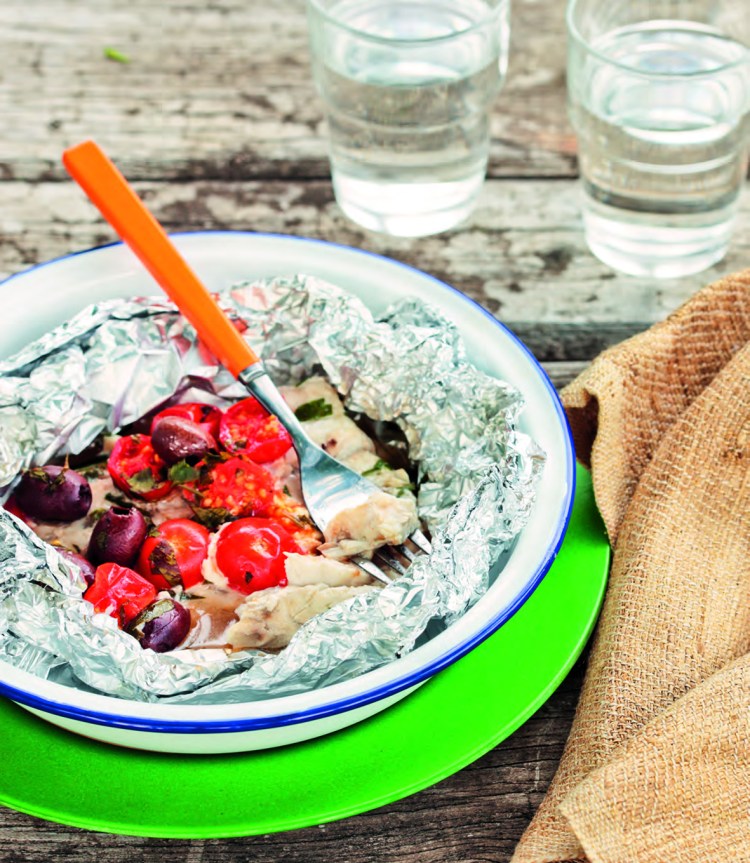Until this month, I’d never been on a camping trip in which I was responsible for feeding myself – meaning I’d only been as a kid or with big groups in which more organized people than me had sorted out those logistics – and I was excited about it.
So when the subject of meals came up while planning my recent three-day stay on Moosehead Lake, I scoffed at my tentmate’s suggestion that we could always just open cans of store-bought chili. Coming back from a daylong hike and cooking a meal over an open flame without a care about carbs or calories was what I was anticipating the most.
My daydreams, however, didn’t serve as adequate preparation, and some bland, shriveled vegetables on the first night led us back to chili on the second – though I insisted, at least, on buying fresh ground beef and a seasoning packet from the Hannaford in Greenville.
Not a week after returning, I came across “Hungry Campers Cookbook” by Katy Holder. Although my first thought was that I could have used it a couple weeks earlier, I decided to take it home with me to try to learn something for any future trips.
I was a little disappointed to find out in the introduction that the author is from London. I was hoping to get my camp cooking education from a seasoned Mainer familiar with local ingredients, campsites and weather conditions, but Holder’s cheery tone and helpful tips made it hard not to like her – even if she’s from “Old” England.
Holder is upfront about the fact that she and her family only camp at sites they can drive right up to – and they must have a pretty big vehicle, considering her list of essential food items and cooking utensils includes chutney and tea towels. She also apparently brings a lot of homemade food, as she dedicates a couple of chapters to snacks and meals to make beforehand, like oat bars and frozen meat dishes.
I was looking more for something that wouldn’t require a lot of ingredients or cleanup but would be flavorful and give me some – I don’t know – “campy” feel. And then I saw foil-wrapped fillets of fish with tomatoes, olives and herbs. Figuring my grill pan on the stove could serve as an adequate test campfire barbecue, I decided to try out the recipe at home.
It called for unspecified white or pink fish fillets – ideally, whatever was caught on that day’s fishing trip. Although my excitement for the day was limited to a trip to the nearest grocery store fish counter, in the spirit of adventure, I bought my first Acadian redfish, which aptly shares its name with a national park. Also, it was on sale.
Sure enough, however, cooking the fish in tinfoil on the stove – complete with grill marks, bubbling juices and smoke in my eyes – sufficiently re-created that camp meal je ne sais quoi I was seeking. And the flavor, ease of cooking and lack of cleanup made it a surefire recipe for my next camping trip. Or maybe I’ll just learn how to make s’mores on my grill pan.
Foil-Wrapped Fillets of Fish With Tomatoes, Olives and Herbs
Olive oil
4 skinless, boneless white or pink fish fillets
250 rams (9 ounces) cherry tomatoes, halved
About 20 pitted black olives
1 small handful fresh herbs, such as cilantro or flat-leaf parsley, chopped
- Tear off 8 pieces of foil, large enough to enclose a piece of fish and some vegetables. Make 4 double layers of foil – these will create individual parcels for cooking.
- Drizzle a little bit of olive oil onto the top pieces of foil and smear it around. Place a fish fillet into the centre of each one. Divide the cherry tomatoes and olives between the fish and scatter over the herbs. Drizzle with a little more olive oil and season with salt and freshly ground pepper. Carefully enclose the fish.
- Place the fish parcels on a grill rack over the fire or on a barbecue and cook for 18-20 minutes, or until the fish is cooked. Unwrap the fish carefully and simply sit the foil parcels in bowls so you won’t lose the delicious juices when unwrapping them.
- Serve the fish in the foil accompanied by rice, potatoes or pasta.
Send questions/comments to the editors.



